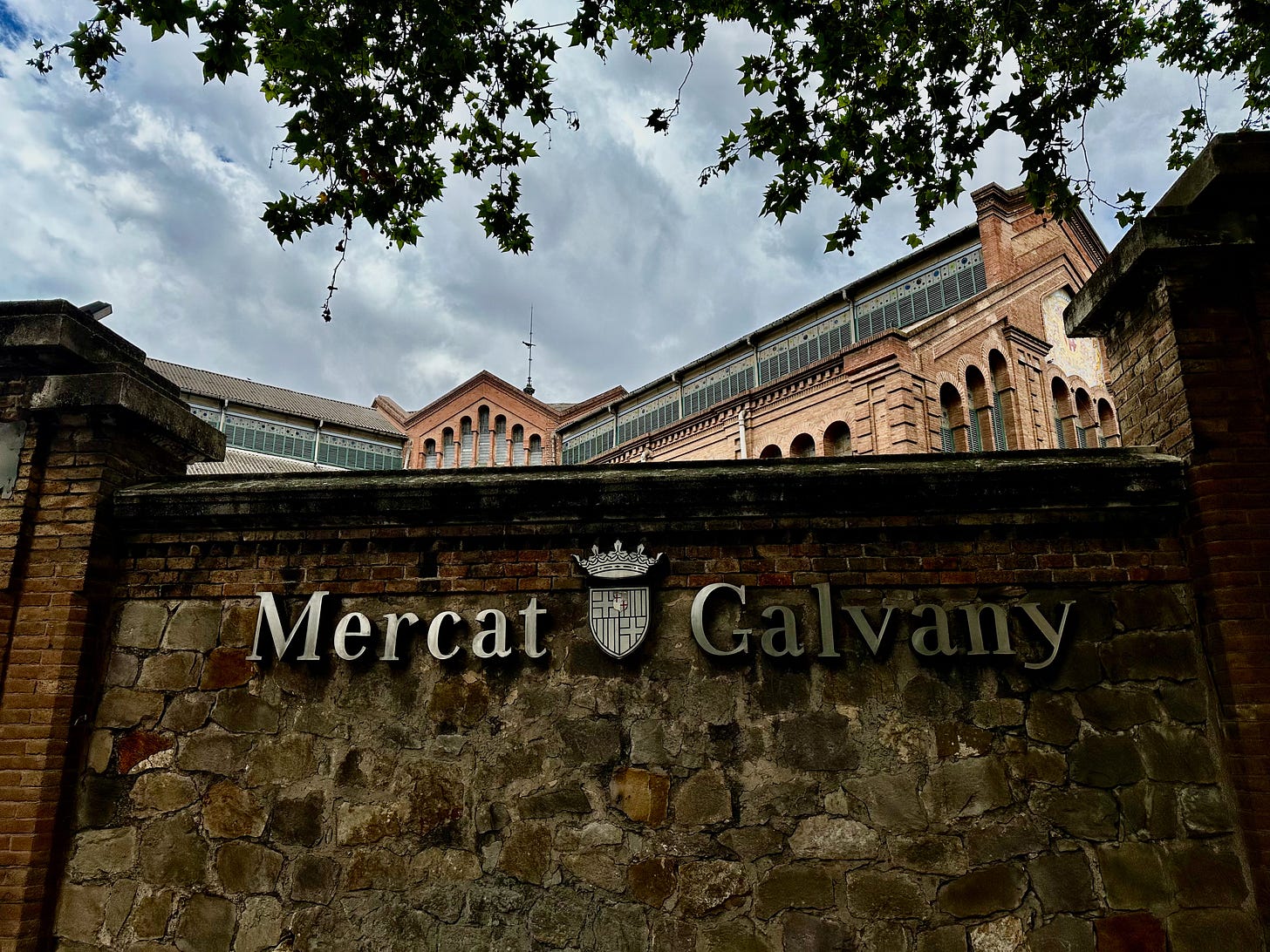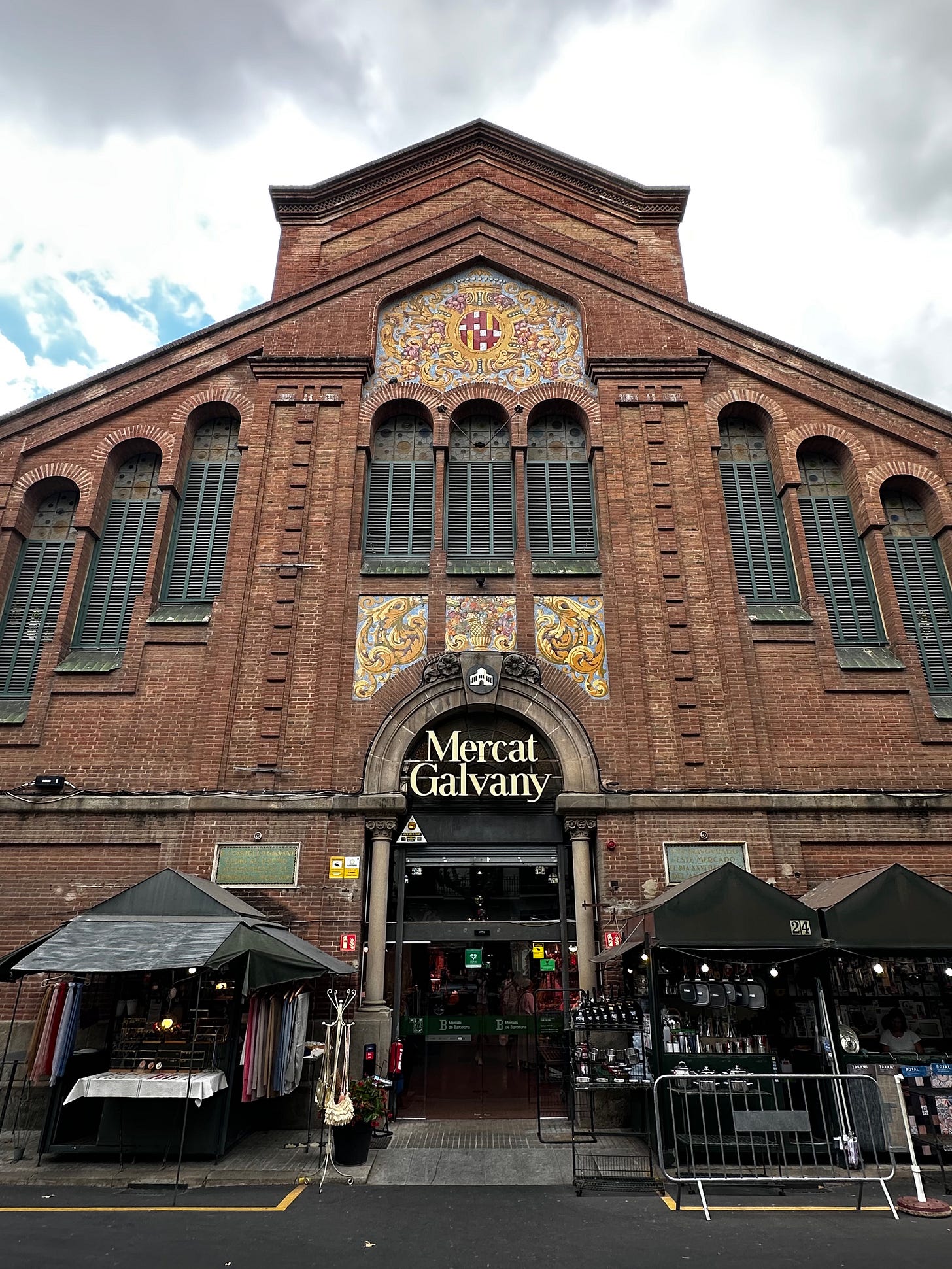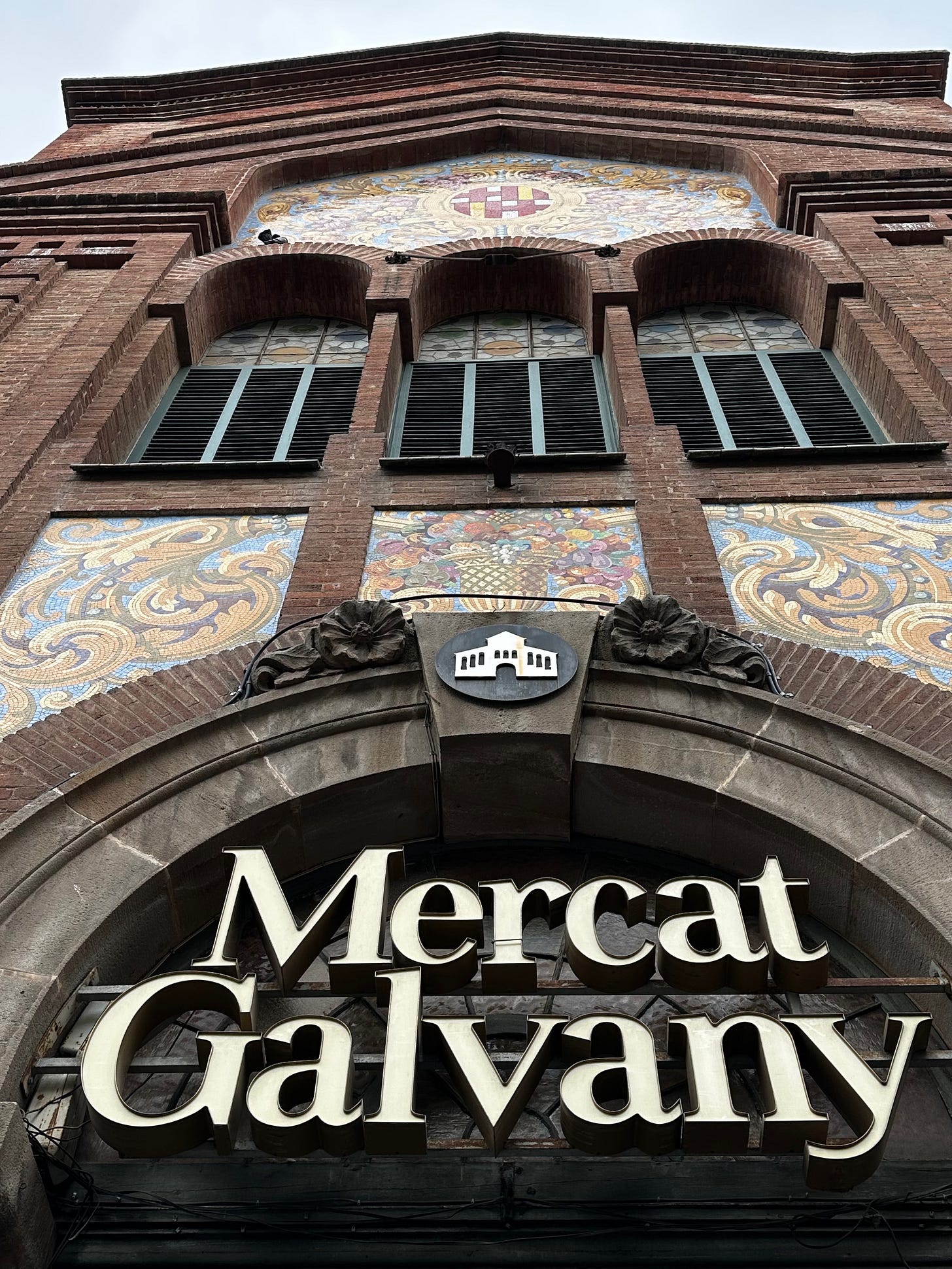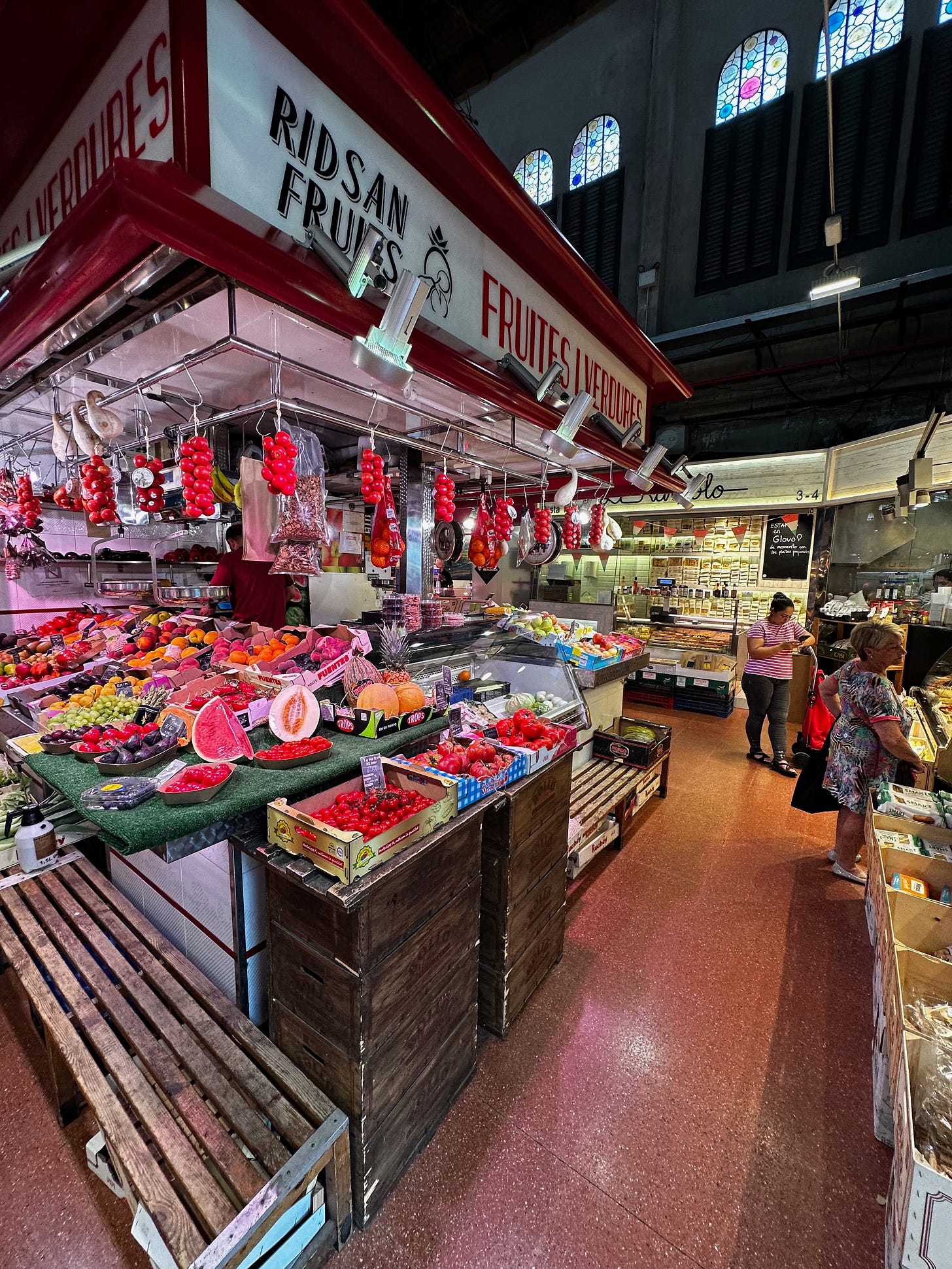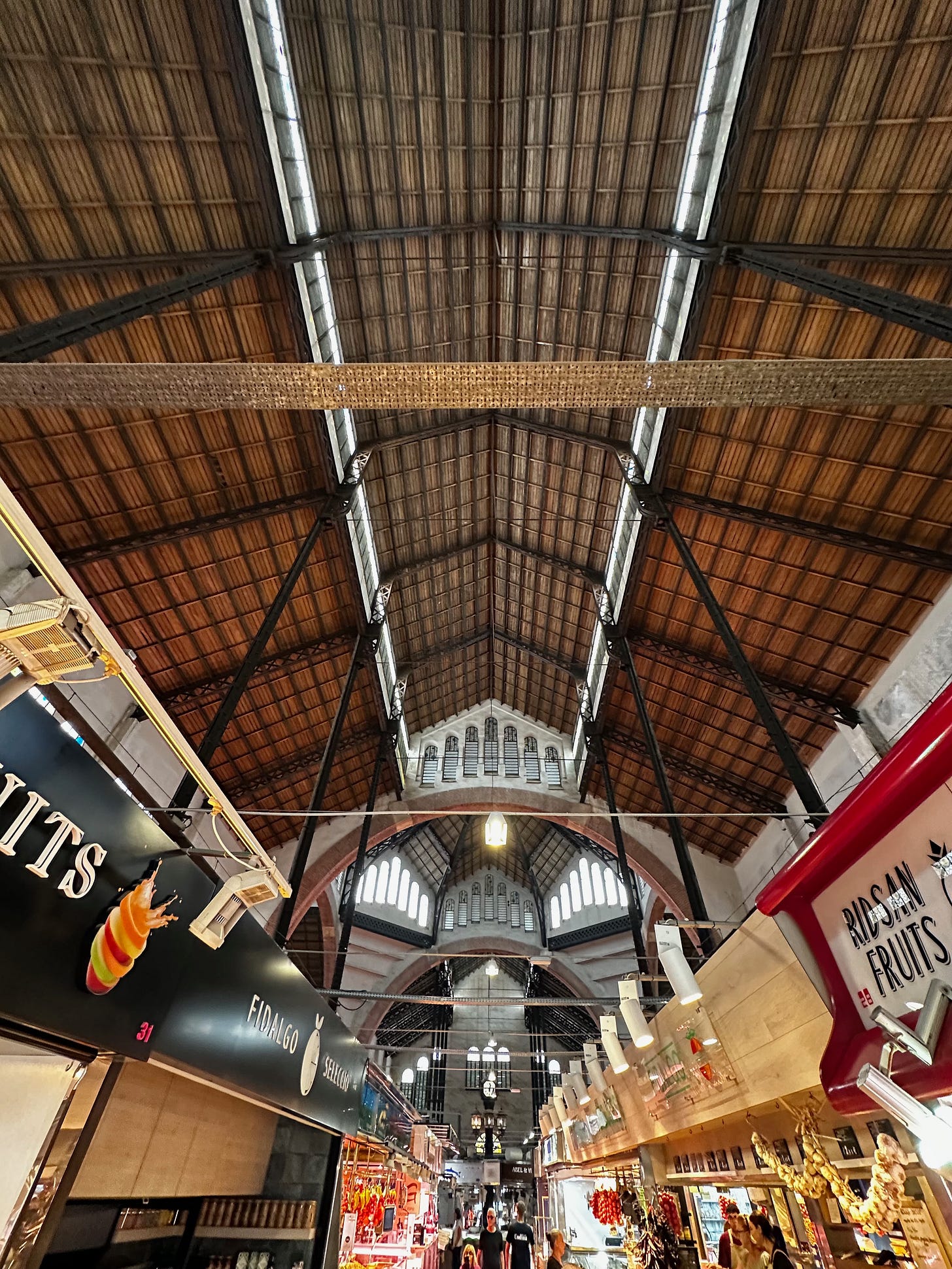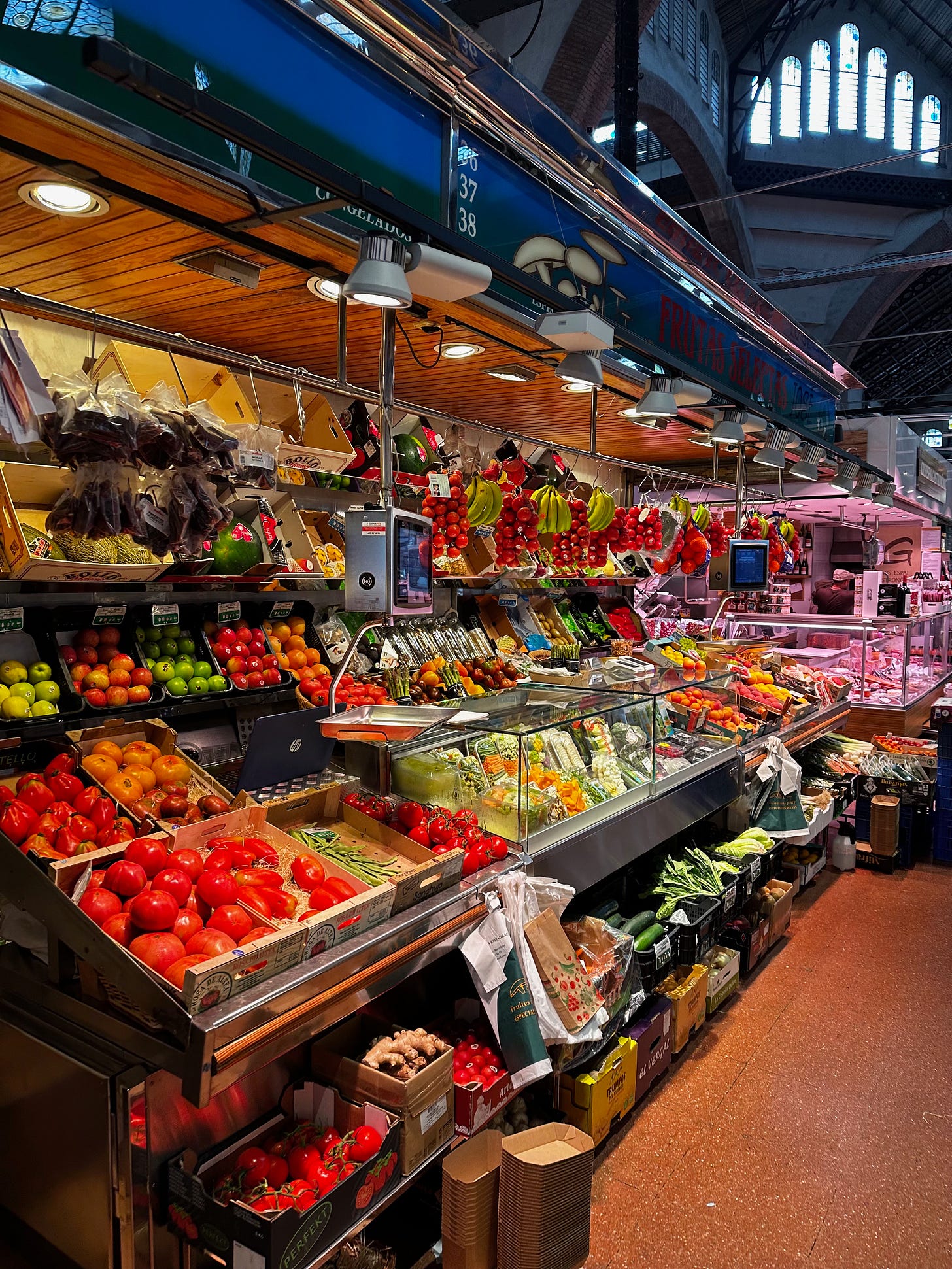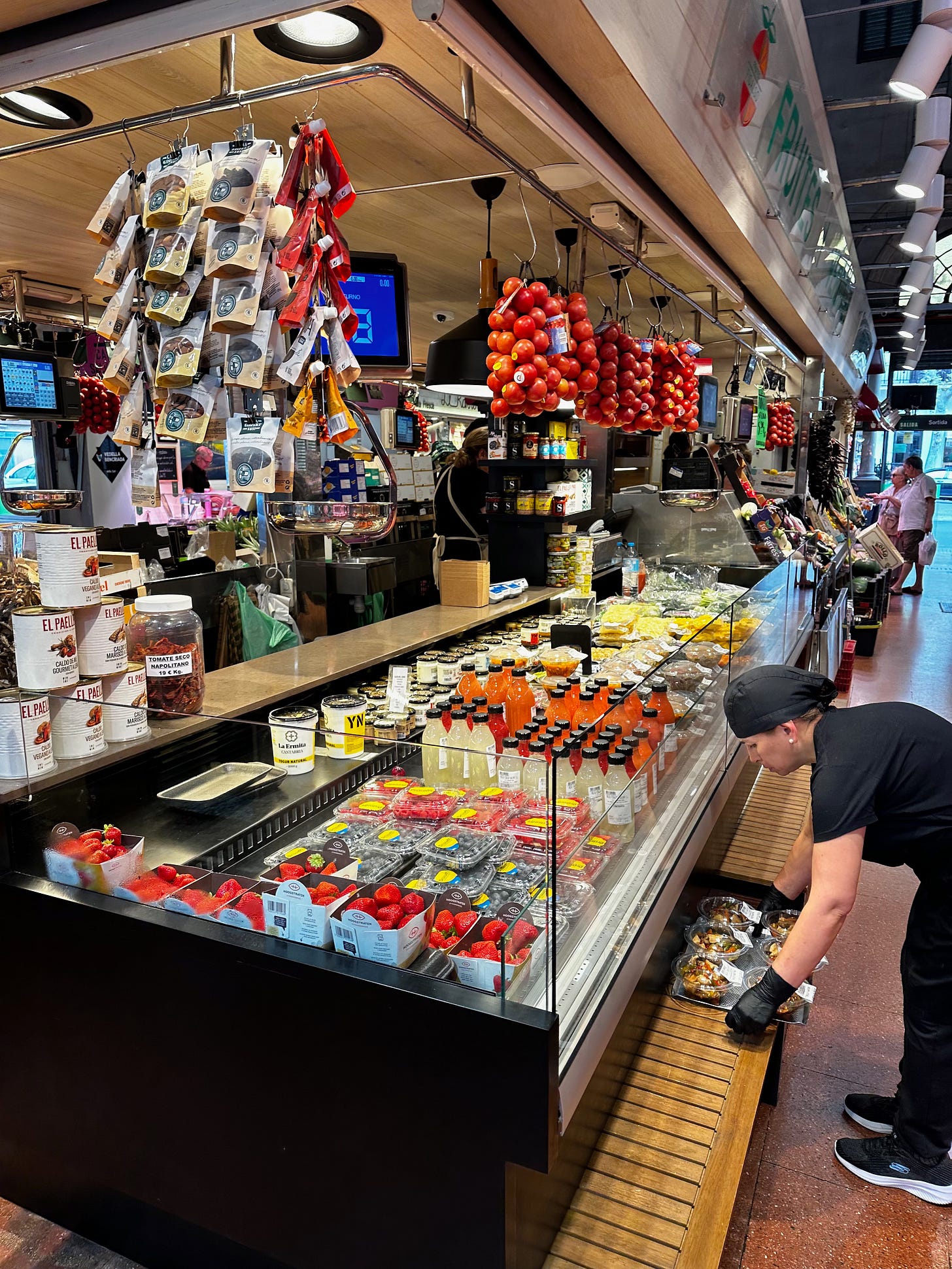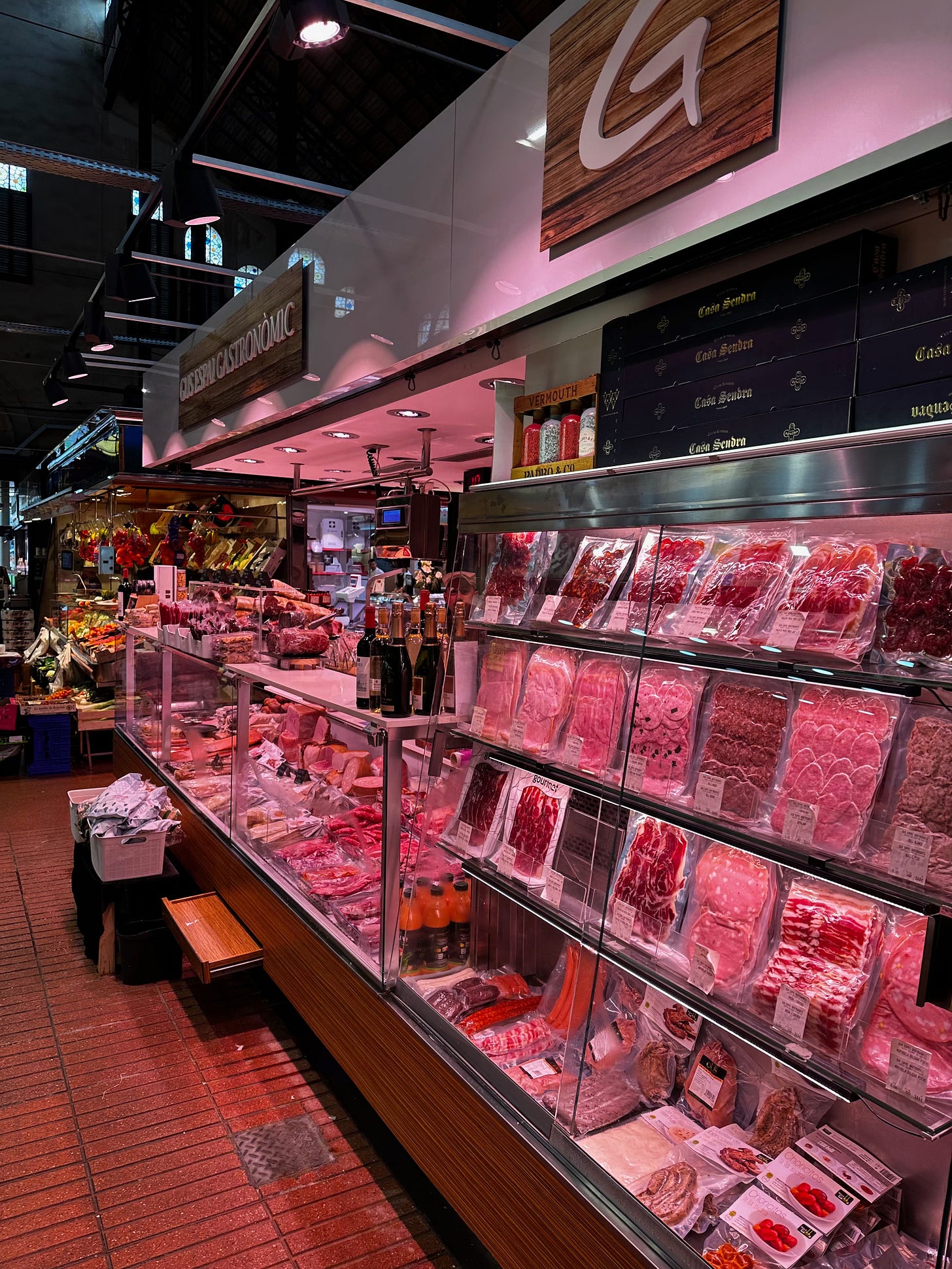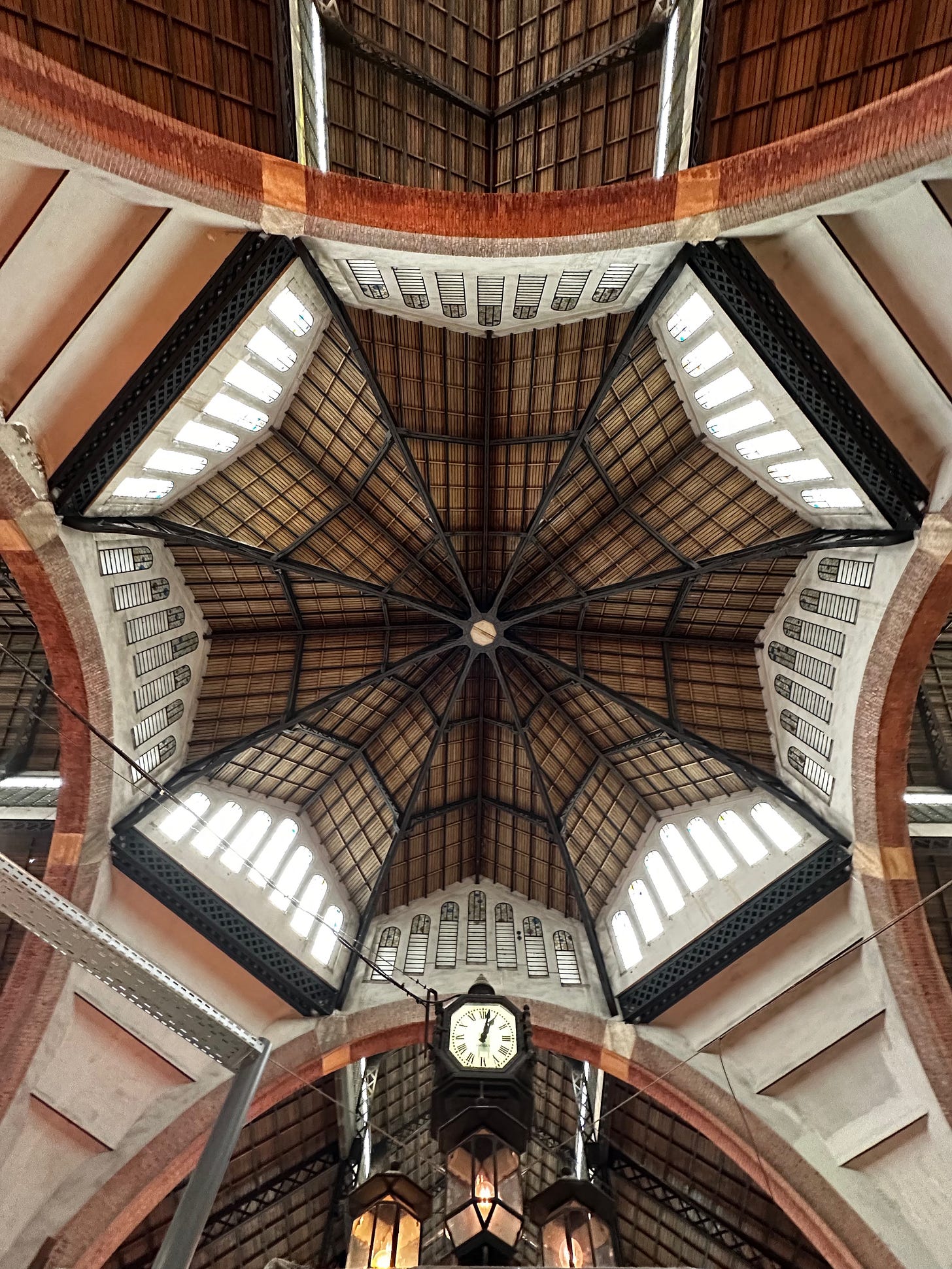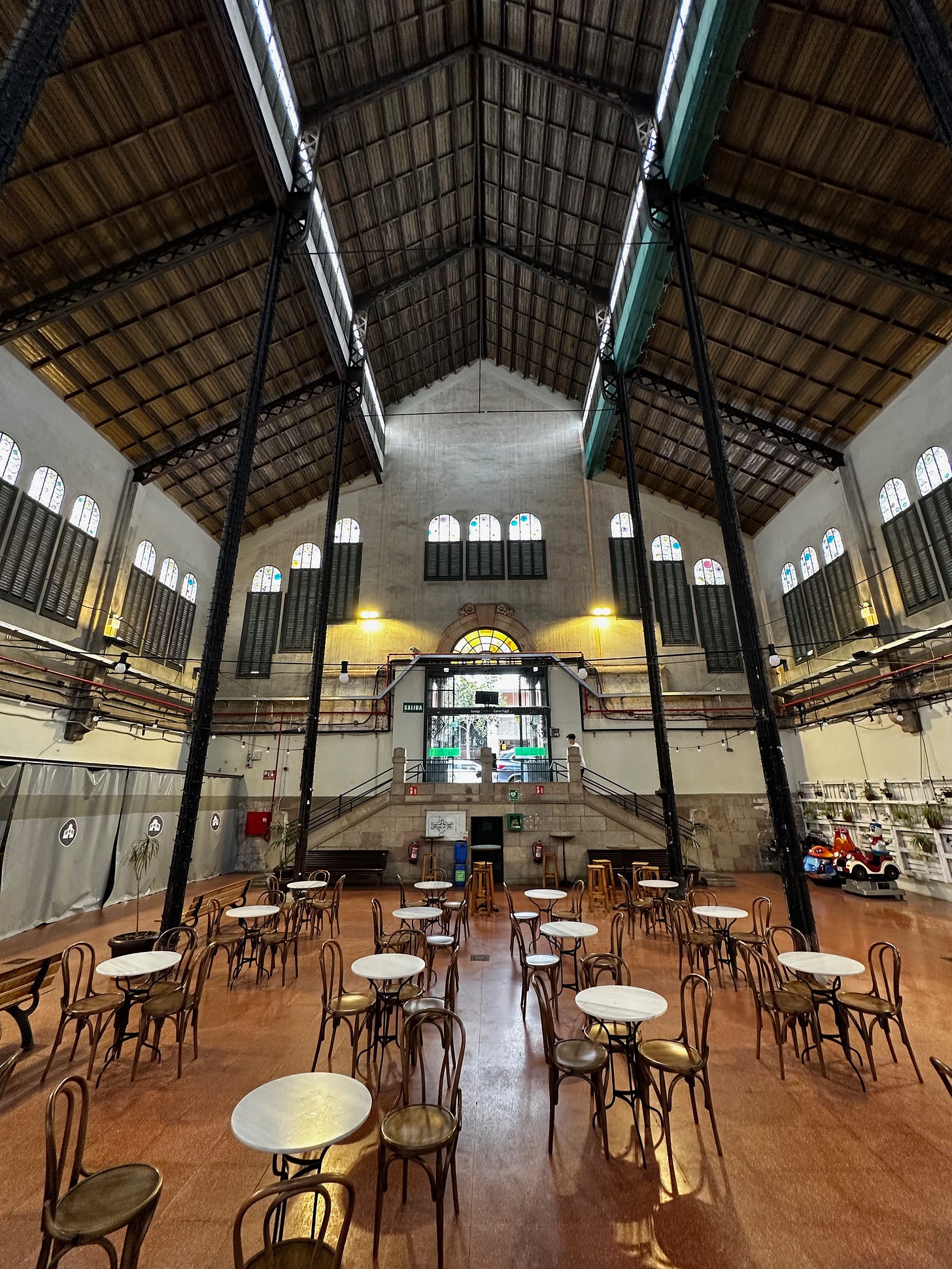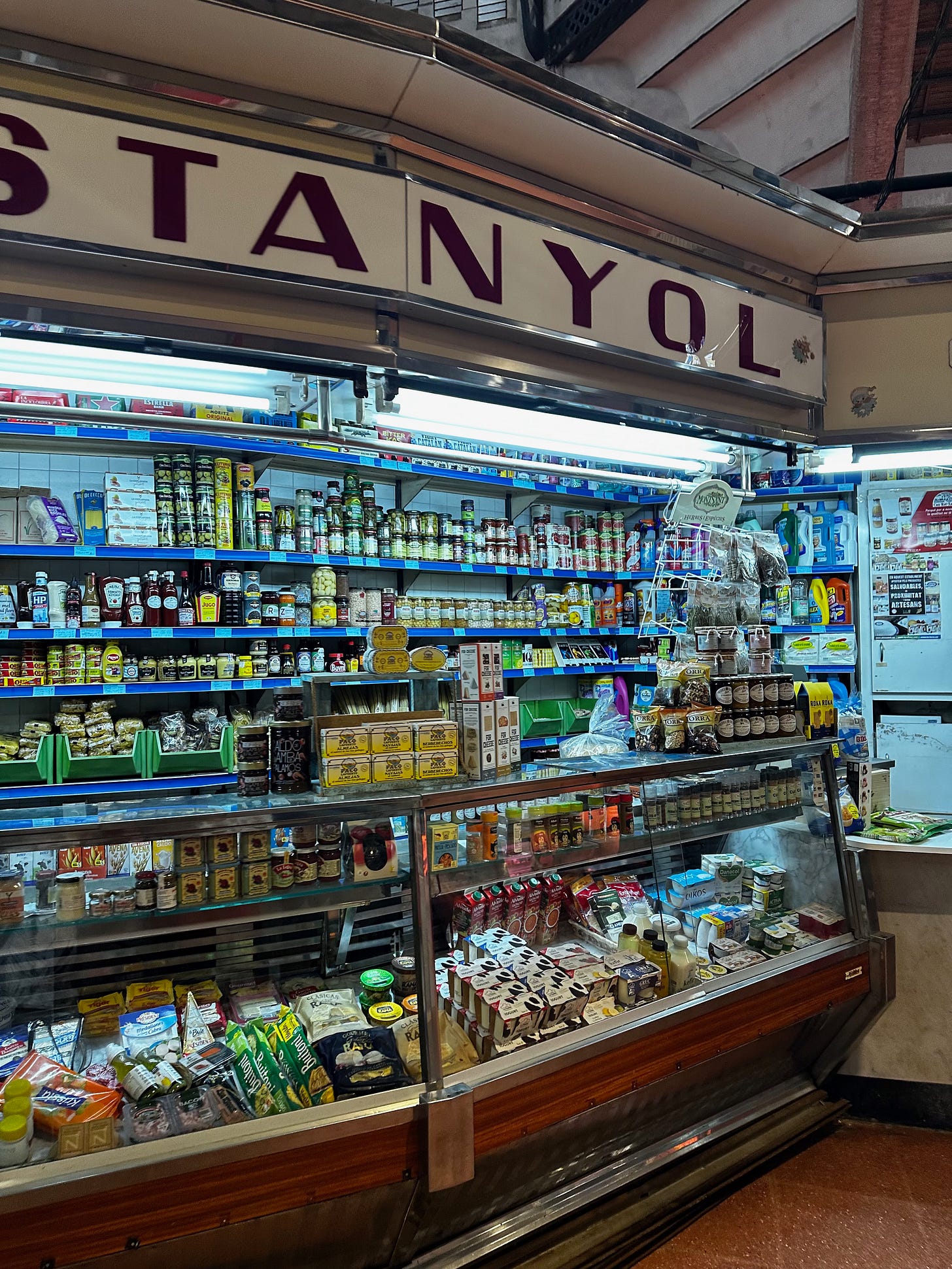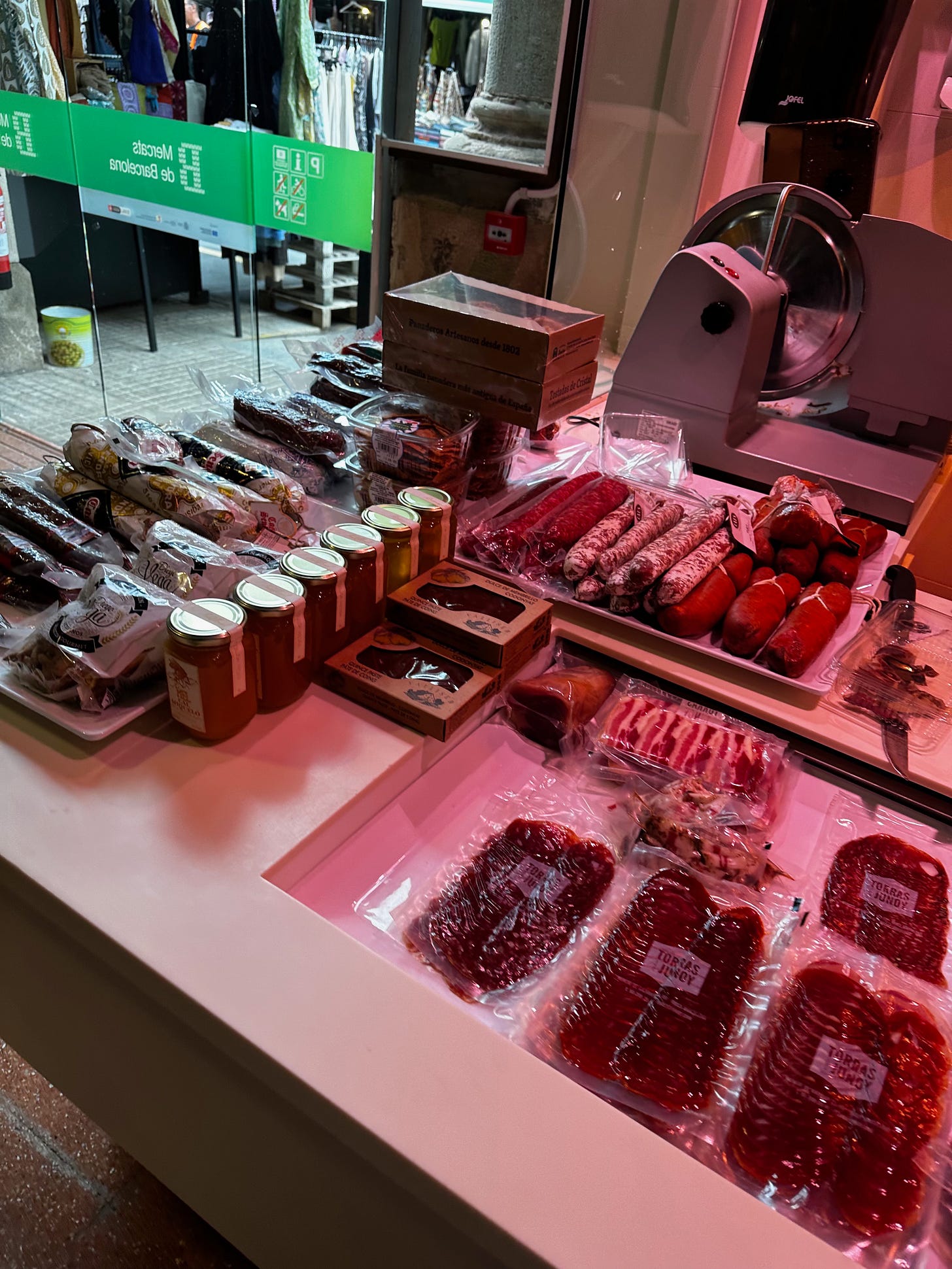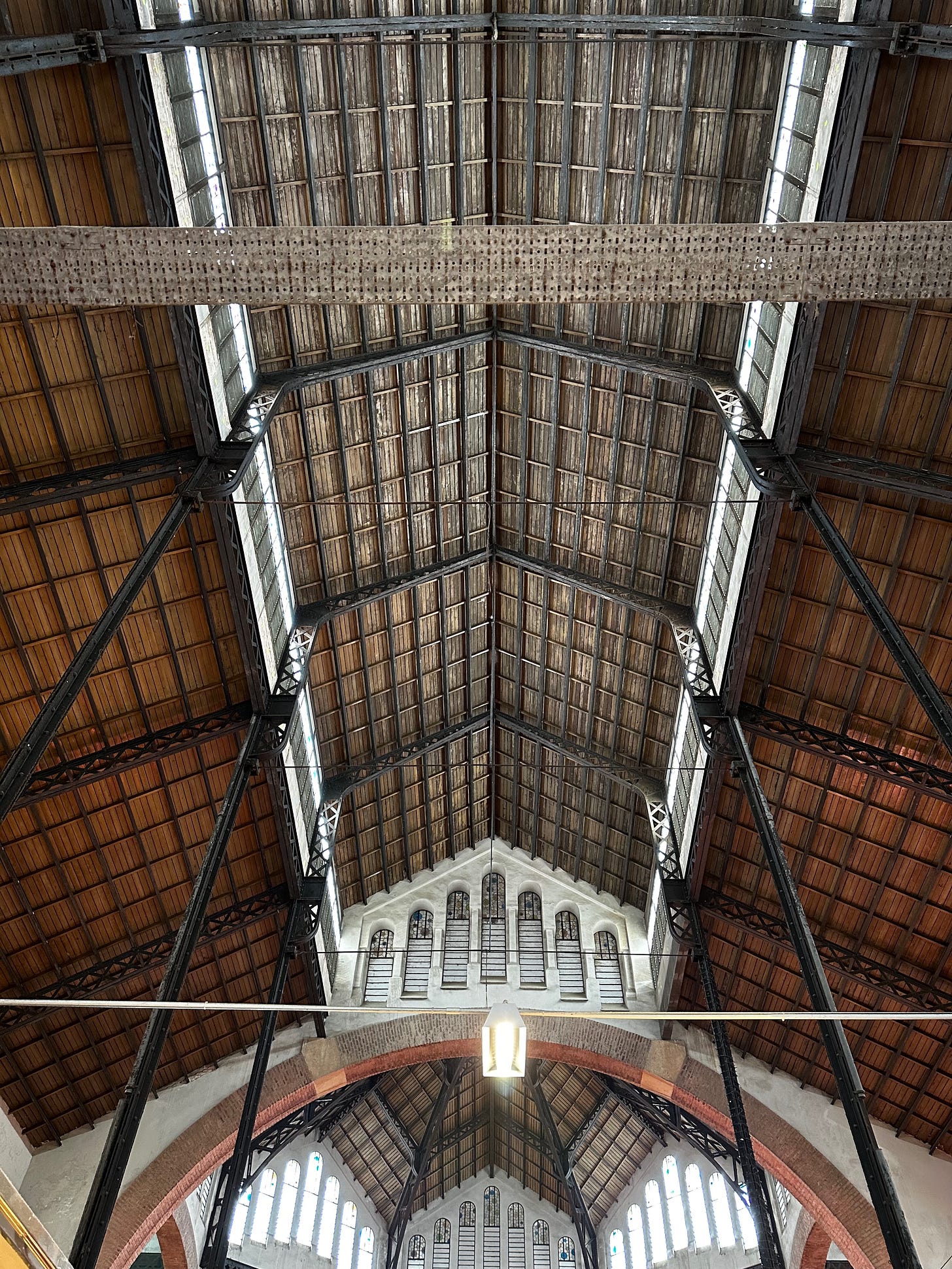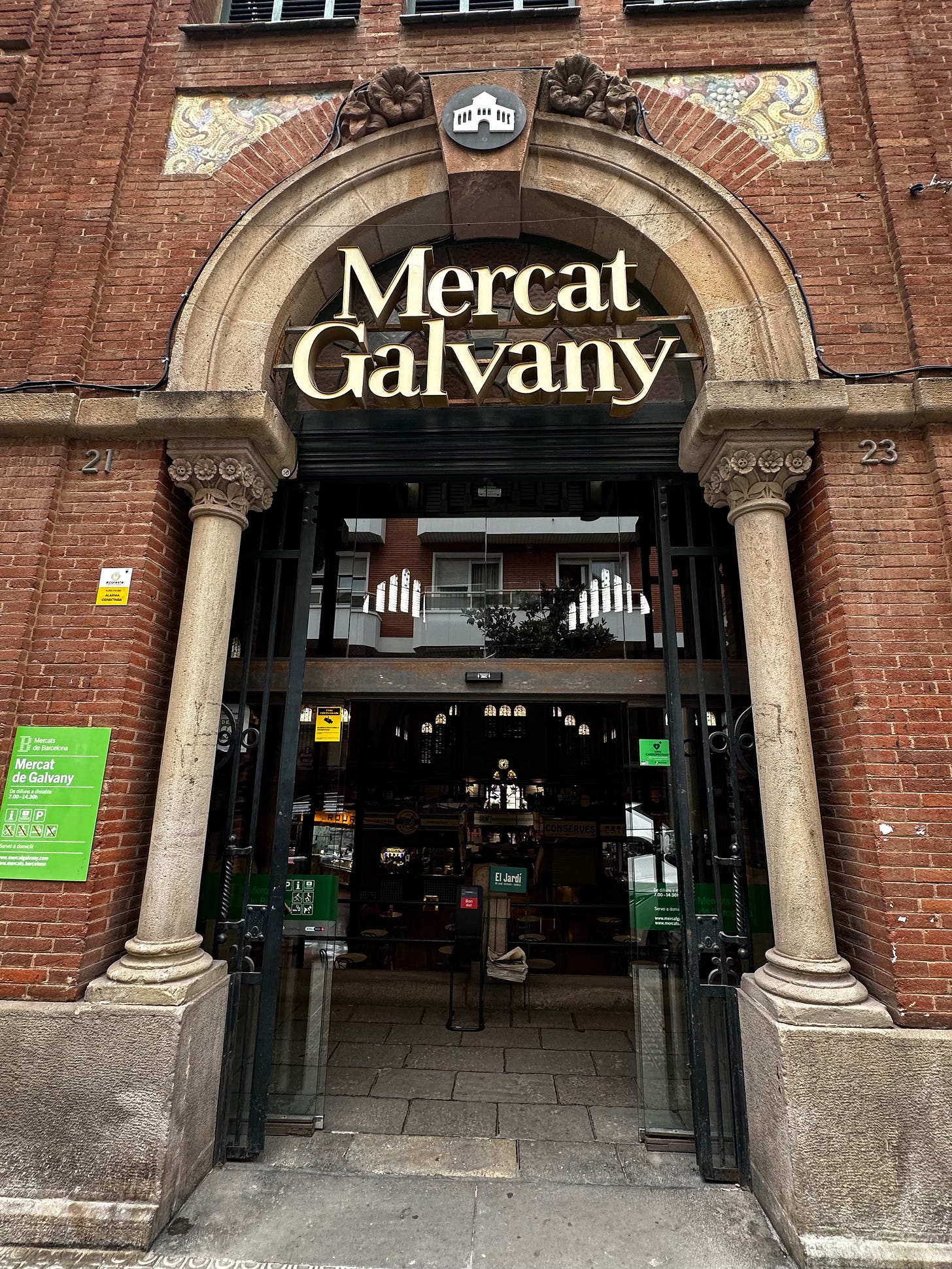A Quiet Corner of Barcelona: A Visit to Mercat Galvany
Barcelona’s Hidden Local Food Market for Fresh Produce and Authentic Flavours
Tucked away in the well-heeled neighbourhood of Sant Gervasi, far from the rambling crowds of La Rambla and the selfie sticks of Passeig de Gràcia, I recently made an impromptu stop at Mercat Galvany—and left with a small haul of groceries and a renewed sense of calm.
Barcelona is a city of spectacle, but every now and then, you stumble upon a space that feels quietly essential rather than performative. Galvany is one of those places. There were no tourists in sight—just locals doing what locals do: picking out the freshest tomatoes, asking about the catch of the day, comparing prices, chatting with familiar vendors, and moving on with their lives. And perhaps that’s what made it so refreshing.
The moment I stepped inside, the tone was clear: this is not a stage set for visitors, nor a curated gastro-experience for Instagram. It’s a working market that understands its role in daily life. The produce was vibrant, the fish stalls glistened with fresh Mediterranean offerings, and the prices were fair, even generous by Barcelona standards. No inflated costs to match postcard views. No neon signs shouting in English. Just a dignified exchange of goods and greetings.
But Mercat Galvany is more than a quiet shopping spot. It’s a piece of living history. The market was officially inaugurated in 1927, though plans for a market on this site date back to 1868, when Josep Galvany Castellví—an influential landowner and the market’s namesake—donated the land for public use. This was a time when Barcelona was growing outward, neighbourhood by neighbourhood, and markets like this were at the heart of new civic planning. Galvany remains one of the few markets in the city that reflects this kind of municipal idealism.
The building itself is stunning in that quiet, understated way Modernisme often is when it’s not vying for your attention. Made of red brick and crowned by iron trusses, it’s an elegant piece of Catalan industrial architecture. Look closer and you’ll see vivid mosaics above the entrance—swirls of fruit and floral patterns flanking the coat of arms of Barcelona, reminding passersby that even ordinary spaces can be touched by beauty.
Inside, that beauty continues in form and function. The iron structure, which once felt innovative and almost futuristic, now feels warm and historic—like the bones of a place that has seen generations come and go, lunch after lunch, week after week.
What struck me most was how genuinely inviting the food stalls were—not in a flashy, stylised way, but in the way that comes from decades of trust between vendor and customer. There’s a butcher shop offering grass-fed beef and Ibérico pork cuts so carefully trimmed they look ready for a cookbook cover. The cheese counters are a quiet treasure trove of both local and imported varieties, from wheels of Garrotxa and aged Manchego to wedges of Comté and Taleggio for those in the know.
The produce stalls overflow with ripe seasonal fruits—sweet melons and peaches in summer, clementines and persimmons come winter. Piles of fresh herbs, wild mushrooms, glossy eggplants, and deeply red tomatoes are arranged not just for function, but with something like pride.
The fishmongers are perhaps the most impressive. Whole doradas, gleaming sardines, and cuttlefish so fresh they still shimmer under the lights sit beside trays of prawns and razor clams, cleaned and lined up like fine jewellery. It’s the kind of place where you overhear someone ask for a specific cut of hake for suquet de peix, and nobody needs to explain what that is.
There’s also a stall that sells prepared foods, the kind you’d expect to see only in your Catalan grandmother’s kitchen if you were lucky enough to have one—dishes like cap i pota, canelons, and escalivada. One bite of the housemade croquettes, and I understood why this market is fiercely loved by those who live nearby.
Markets like Galvany do something city planners and lifestyle magazines often forget: they serve. They aren’t designed to dazzle, they’re designed to support life. You don’t come here to be entertained. You come here because you need fish, or bread, or beans, and you leave with more than you expected—perhaps a short chat, a sense of community, a glimpse of what urban life looks like when it’s not packaged for visitors.
In a city often caught between heritage and hype, Mercat Galvany quietly insists on its own rhythm. It’s special not because it shouts, but because it never needed to. It’s a reminder that the most authentic parts of Barcelona are often found just a few blocks away from the crowds—if you’re willing to look.
And sometimes, all it takes is a simple stop for groceries to remind you that a city isn’t made of monuments or museums. It’s made of places like this—markets, regulars, routines. And the dignity of a fresh tomato at a fair price.
As for me? I left with a bag full of fresh vegetables and a few perfectly portioned chicken breasts—nothing extravagant, just real food, ready to be turned into dinner. Proof that the best stories are often the most ordinary ones—especially when they come with good ingredients.



